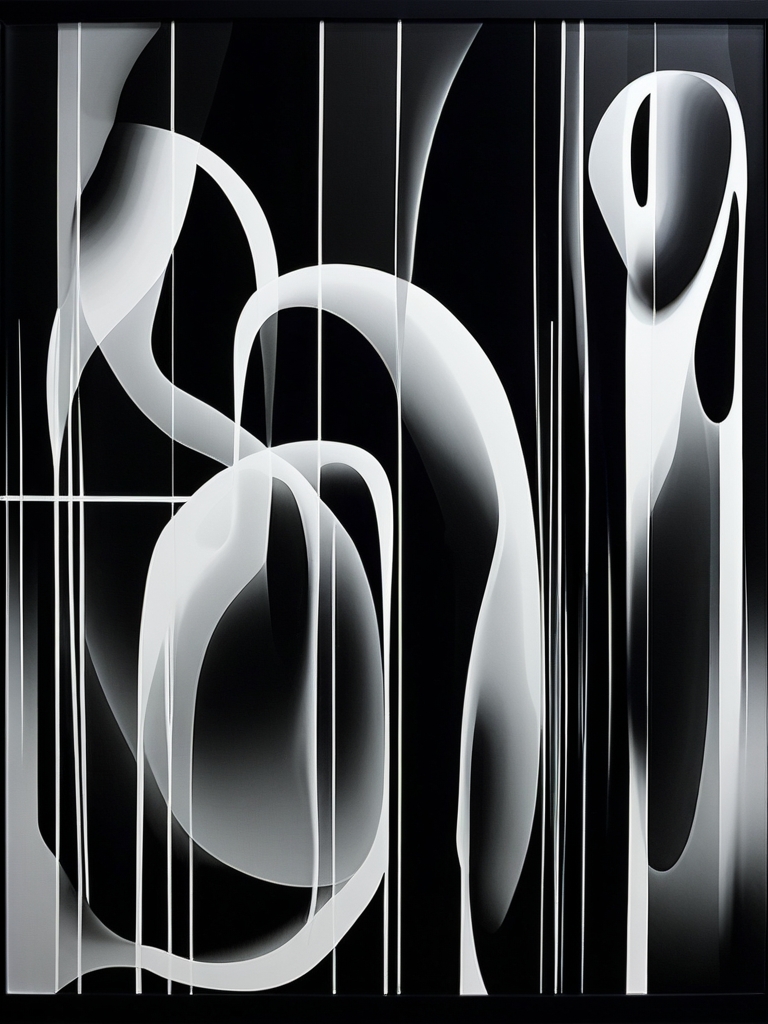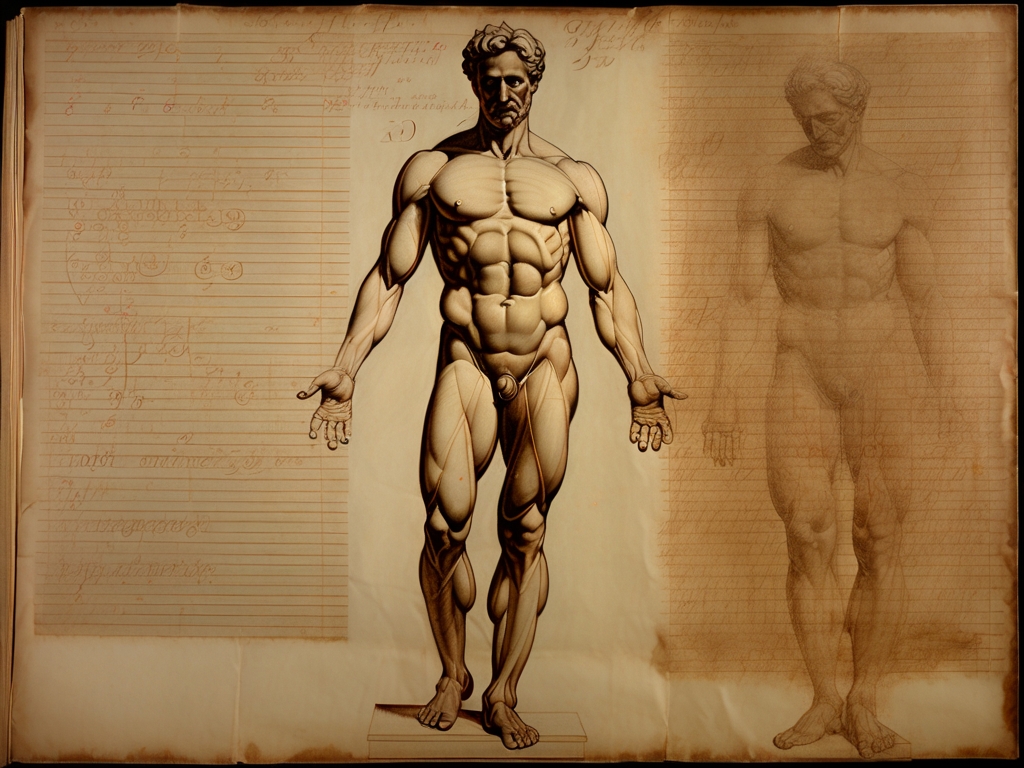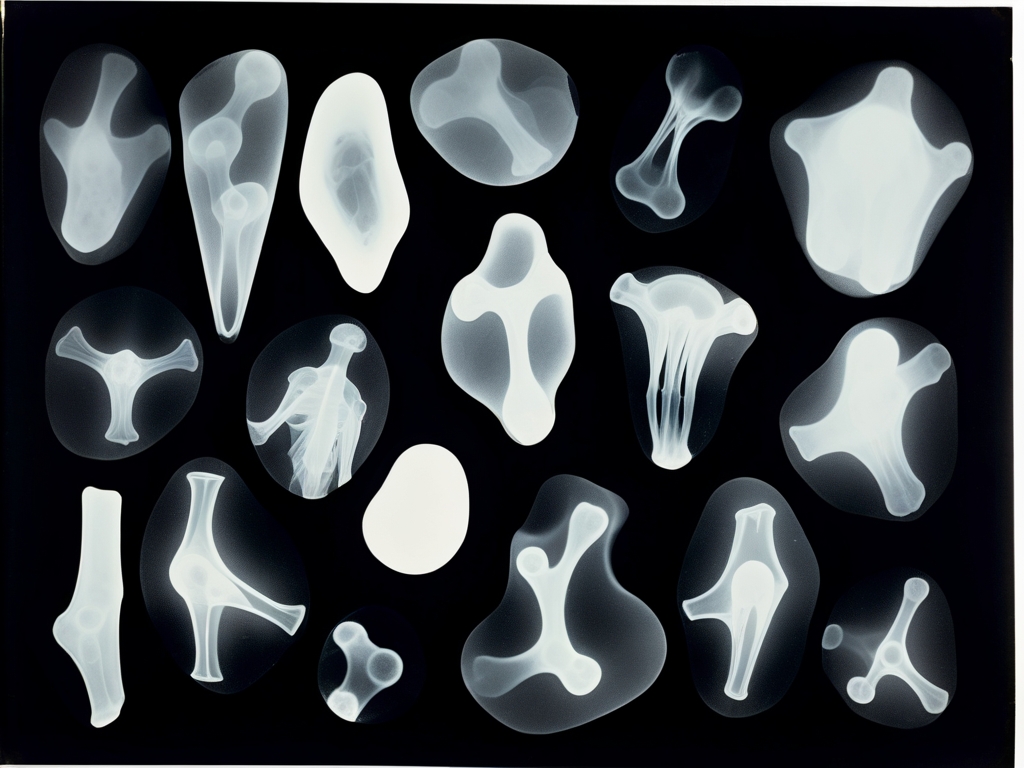Shadows of Sorrow

The photograph materializes from darkness like a fever dream, its solarized surfaces writhing between positive and negative realms. Abstract forms coalesce and dissolve, their edges burned by chemical fire into something beyond conventional sight.
This singular piece represents the pinnacle of Modernist experimentation, where traditional photography surrenders to alchemical transformation. The solarization technique creates otherworldly reversals, transforming light into shadow and shadow into luminescent void, crafting a visual language that speaks to the unconscious mind.
Lysander Thorne discovered the orphan Celestine Morrow in 1926, wandering London's fog-shrouded streets after the plague claimed her family. The child's grief manifested in peculiar ways—mirrors cracked in her presence, and photographs developed strangely when she lingered near darkrooms.
Thorne, fascinated by these phenomena, began documenting Celestine's psychological deterioration. Each portrait session revealed deeper layers of her anguish, captured through increasingly experimental techniques. The camera seemed to absorb her sorrow, transforming silver halides into vessels of pure melancholy.
The final session occurred during winter's harshest grip. Celestine sat motionless for hours while Thorne manipulated light and shadow around her diminishing form. The developing chemicals responded to her presence with unprecedented violence, creating impossible inversions of reality.
When the photograph emerged from the developer, Thorne gasped. The image showed not Celestine's physical form but the architecture of her grief—abstract geometries of loss that seemed to pulse with their own terrible life. The solarization had captured something beyond the visible spectrum.
Celestine vanished that night, leaving only footprints in the snow that led to the Thames. The photograph remained, but its surface continued evolving, the solarized areas shifting like living tissue. Some claimed to see faces in the abstract patterns—countless orphans consumed by identical despair.
The image began affecting everyone who viewed it. Laboratory assistants reported dreams of suffocating darkness. Gallery visitors wept uncontrollably, overwhelmed by sensations of abandonment they couldn't explain. The photograph had become a conduit for collective sorrow.
Dr. Evangeline Ravensfield acquired the piece in 1952 after learning of its unusual properties through correspondence with traumatized collectors. She recognized its significance as both artistic achievement and psychological artifact, understanding that some artworks transcend their material constraints.
The solarization doesn't merely reverse light and dark—it excavates the soul's hidden topography, revealing grief's true architecture. - Professor Helena Blackwood, Experimental Psychology
Today, visitors often experience profound emotional responses when encountering the photograph. Many report feeling watched by invisible presences, while others claim the abstract forms rearrange themselves when observed peripherally. The piece continues to serve as a haunting meditation on loss, its solarized surfaces forever cycling between revelation and concealment, light and shadow, presence and absence.




